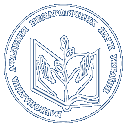- Цимбалару, Анжеліка Дмитрівна (2016) Educational space: the essence, structure and mechanisms of creation Ukrainian Pedagogical Journal, 1. pp. 41-50. ISSN 2411-1317
|
Text
Освітній простір. Сутність, структура і механізми створення.pdf Download (271kB) | Preview |
Abstract
The article covers the essence of the educational space concept in terms of the institutional and the substantial aspects of understanding the phenomenon. Within the institutional space, educational environment is characterized by a certain percentage of society, where the conditions for personal development are assured. Within the substantial aspect, the educational environment is defined as the ability and the availability of the personal space of the educational process subject. The summary of the results of the analysis on understanding the phenomenon from different perspectives allowed to determine its integral characteristic as a pedagogical reality in which there is meeting, cooperation, understanding and knowledge on the individual educational environment. At the same time, the results of academic research became the basis for defining the semantics of the concepts of school educational environment as a spatially substantive component, that is, the subject vehicles, a specific location which creates the necessary conditions for the organization of actions and the definition of the educational environment in schools, which comprises a complex entity that consists of the educational space of each participant of the educational process. Considering that the educational environment may be the subject of targeted changes, the author conducts the analysis on various approaches to the structuring of the educational space and the appropriate tools for its foundation. Therefore, as it has been notified in the paper, depending on the structuring of educational space (informational, social and other media, educational program and educational tasks, the interaction of the teacher, the student and the environment, etc.), the ways of its formation include ergodesigning, designing, deploying, self-organization and projecting. The conducted theoretical study provided the author an opportunity for making certain conclusions on the fact that the educational environment is considered relatively to a personality as he/she is peculiar for performing an activity that leads to the educational environment mastering. Understanding the process of development as educational events predetermines pedagogical projecting as a leading tool for the goal-oriented educational space design.
Downloads
Downloads per month over past year
Actions (login required)
 |
View Item |




